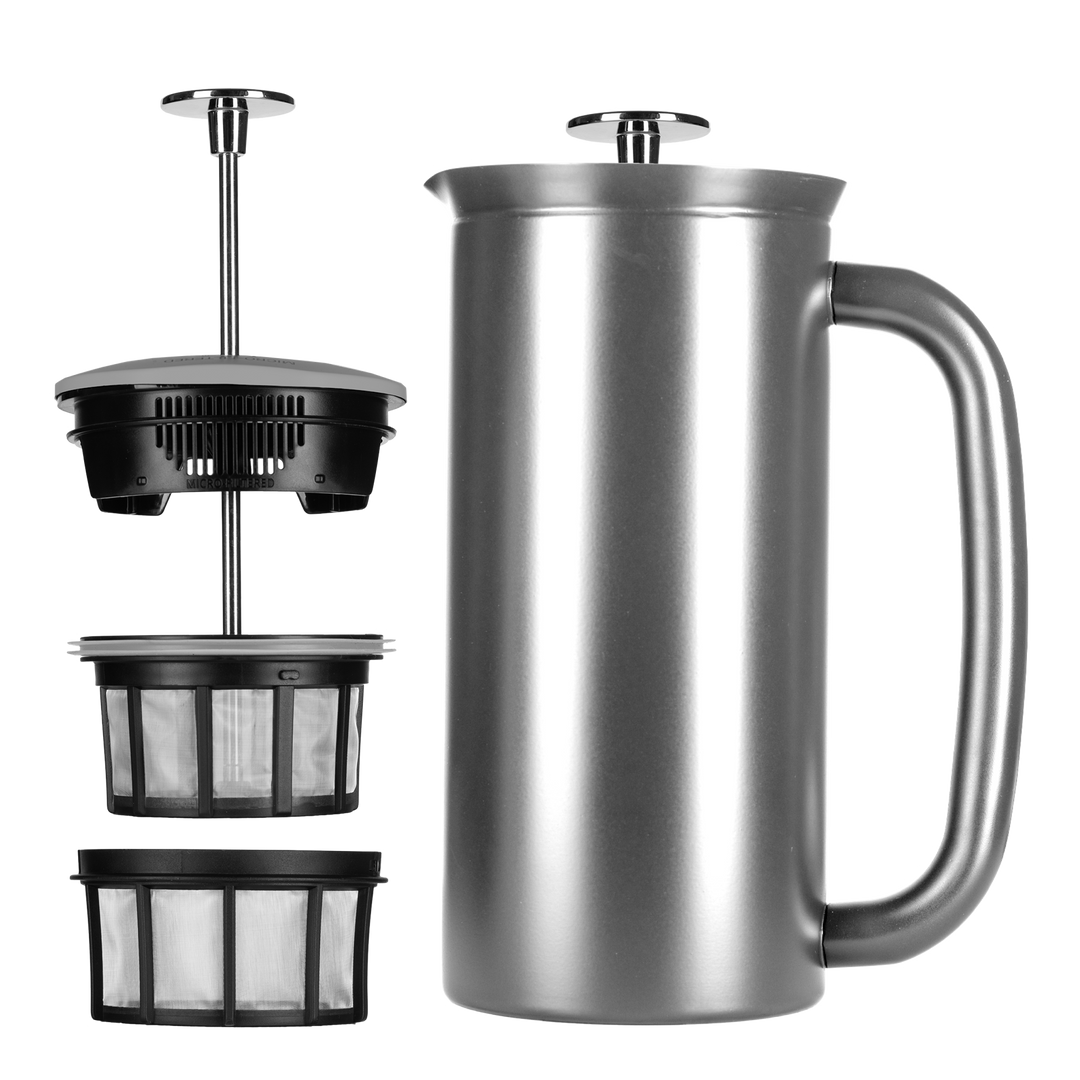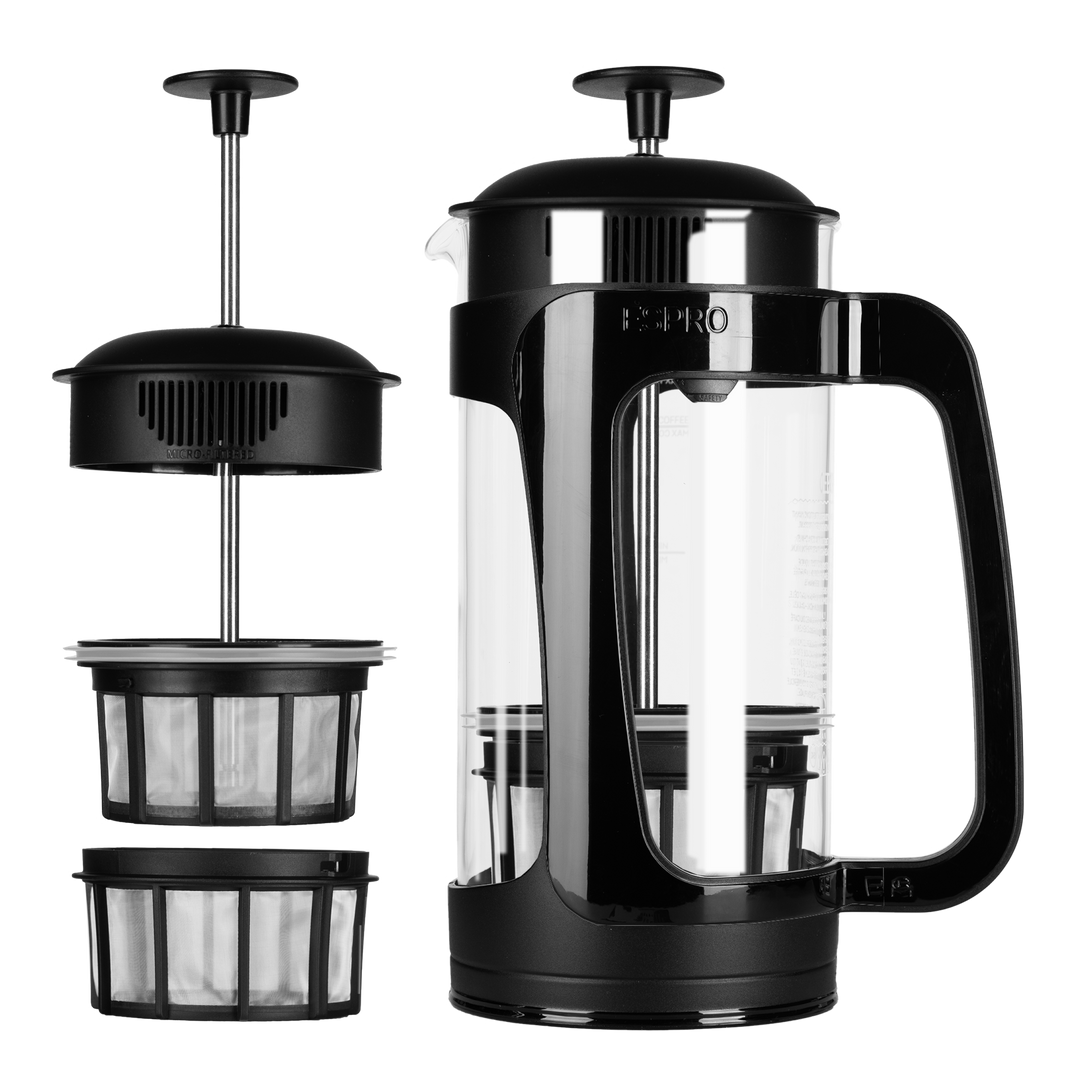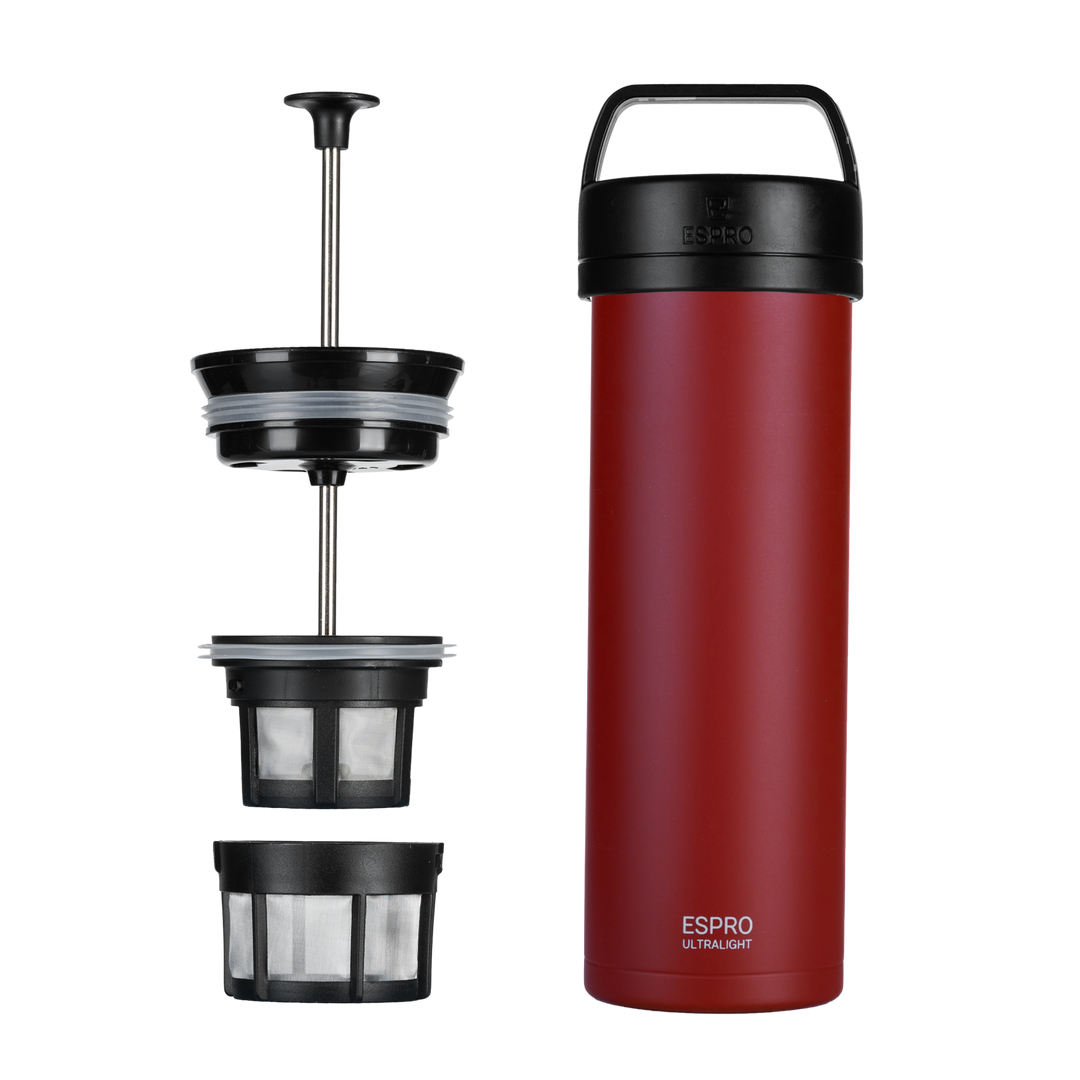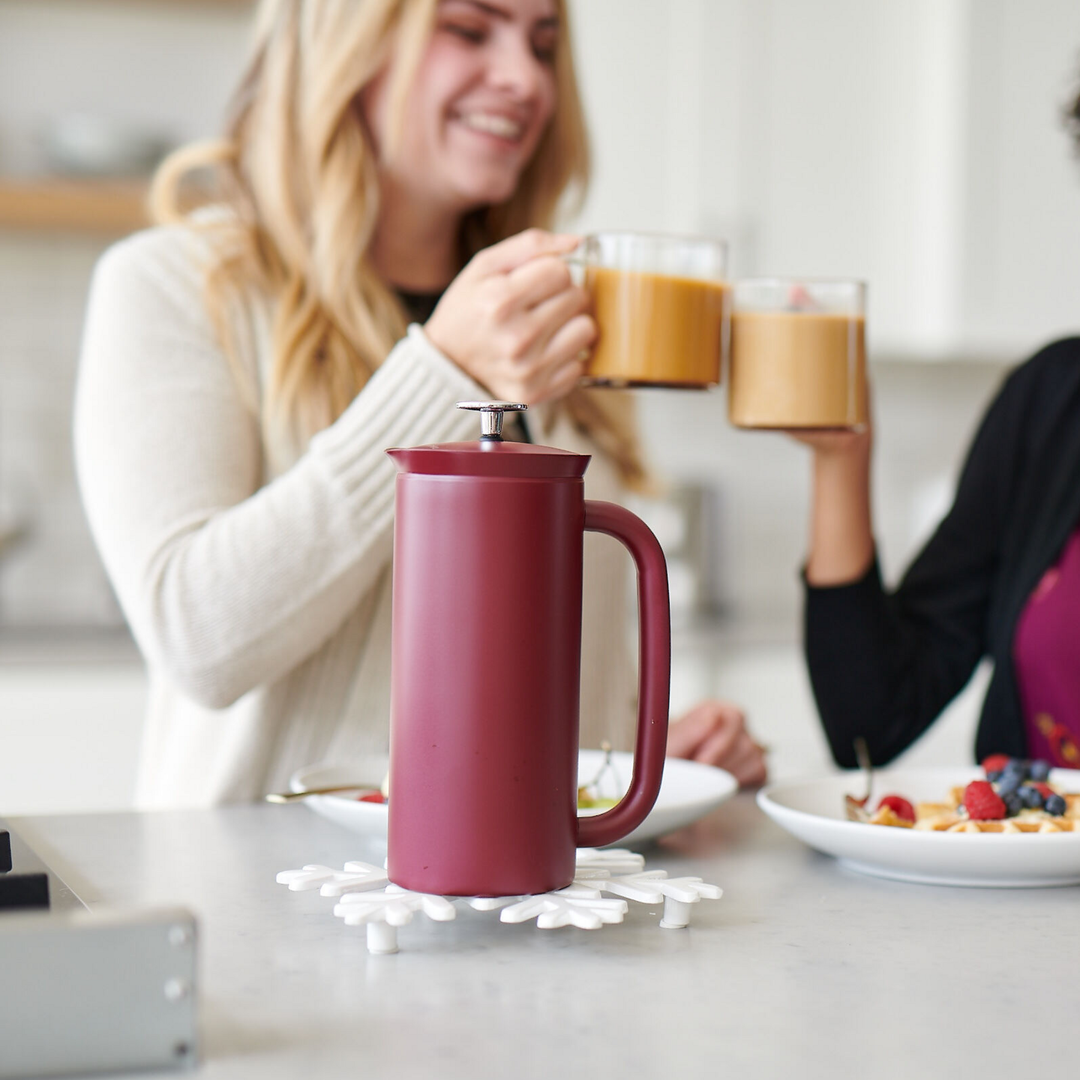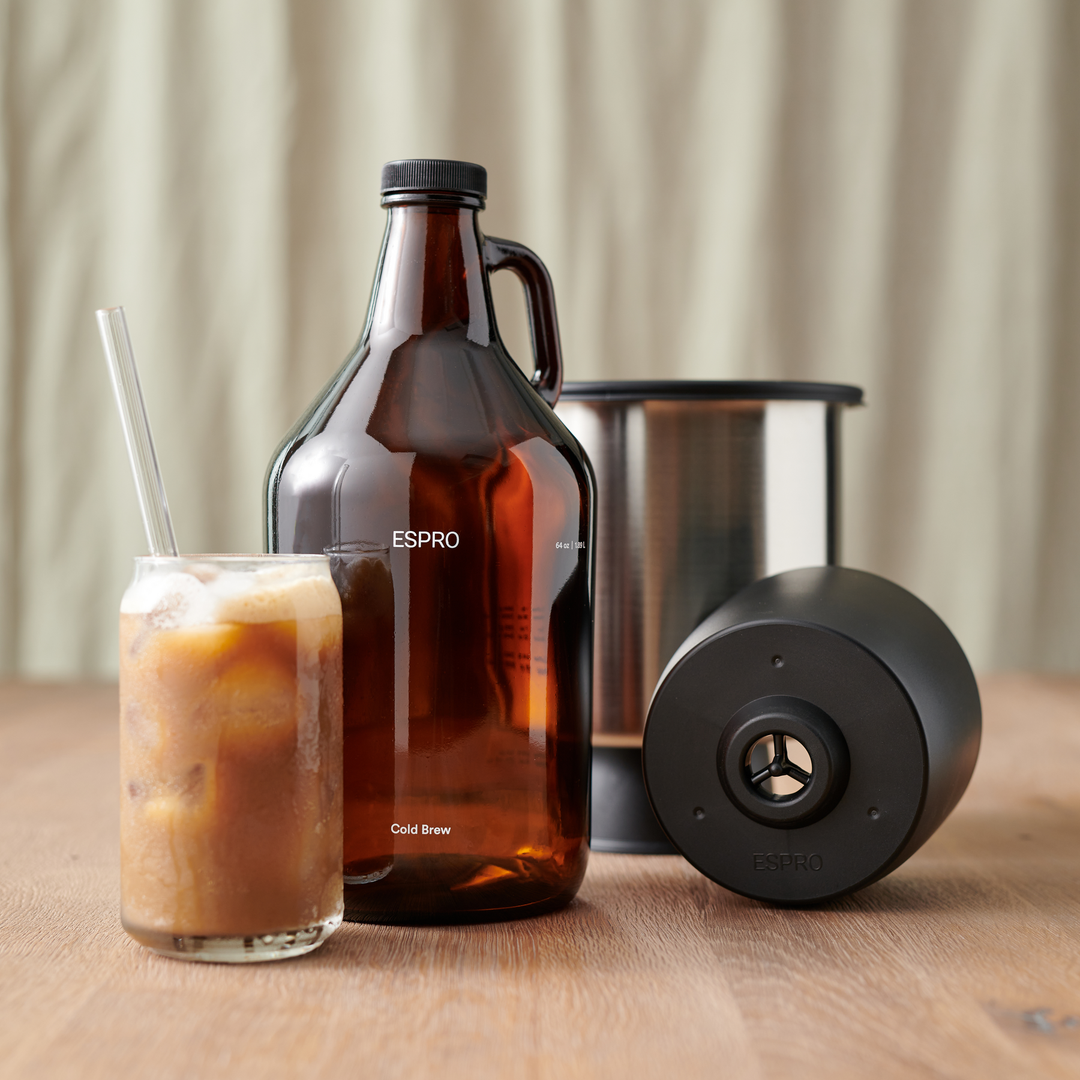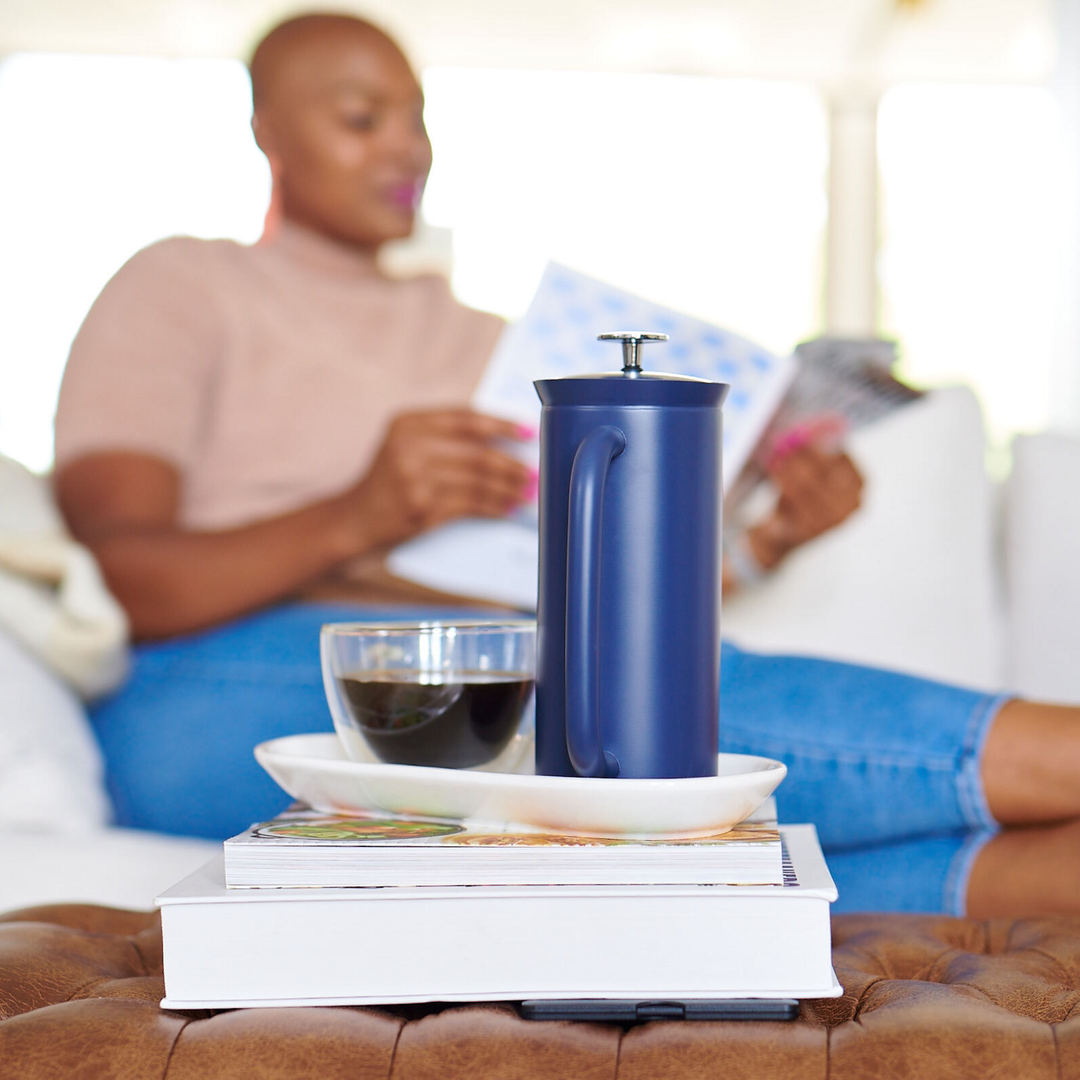We answer your burning questions about this chilly beverage.
Flavor starts at the bean—where it’s grown, how it’s harvested and how it’s roasted. But the way it's brewed—from pour-over, to French press, to percolation or cold brew—shapes the final experience you get when it hits your lips. To help you decide if cold brewing is the method for you, we break down the process, science and results of cold brewing to answer all your burning questions about this cool brewing method.
Why cold, rather than hot?
First off, cold brew remains drinkable longer than other methods of brewing. It can actually last between 2-4 weeks in the fridge—which means less precious time spent brewing every morning.
Have you ever experienced the mid-morning coffee stomach churn? Cold brew is easier on your gut than your usual drip coffee or espresso. The culprit—acid—is extracted from coffee beans when brewed at higher temperatures. Acid is reduced by up to 70% when you cold brew, while the caffeine found in your usual morning java almost doubles. Because about twice the coffee grinds are used when brewing coffee cold, there is more of a caffeine hit. Cold brew’s cooler temperature also makes it easier to enjoy in a variety of seasons and climates, so you don’t have to settle for a melting, diluted iced coffee in the warmer months.
The best beans for cold brew
Both origin and roast contribute to taste. With this in mind, some coffee brewers suggest making cold brew with single origins, in light to medium roasts because they’re naturally more acidic. As we mentioned earlier, the cold brewing process eliminates much of the acidity of the beans.
How to brew
There are two ways to make cold brew. Typical cold brewing involves soaking coffee grounds in cool water and then letting them steep for a minimum of 15 hours, and as long as two days. In the slow drip process, ice water slowly drips onto coffee grounds and collected in a carafe below. Immersion, on the other hand, is simply the process of placing coffee grounds in a vat of water and letting them steep for an extended period of time. Our Cold Brew system uses the immersion process. Fun fact: you can also make tea with a cold brew method. Simply sub coffee grounds for tea leaves.
How to serve
So, you’re ready to serve up a glass of cold brew. Here’s how to do it right: In a tall glass filled with ice, mix equal parts cold brew coffee and water. This dilution is necessary because your beverage will be a strong concentrate post-brewing. Now it’s time to taste your cold brew to assess its flavor. If the boldness of your brew is too strong, mix three parts coffee, and one part milk or cream. That should smooth it out even more.
Behind the Design of our Cold Brewer CB1
We designed a cold brew system you’ll want to showcase on your counter, with an amber glass growler and sleek stainless steel brewer. The growler makes storing your cold brew concentrate easy and spill-free. We created our system with an auto-lock valve that opens automatically once the brewer is attached to the growler funnel. When filling is complete, remove the brewer and the valve automatically closes, eliminating mess. And in true ESPRO form, grounds are filtered twice—because life is too short for gritty coffee.
Check out this step-by-step guide for brewing with our Cold Brewer CB1.



